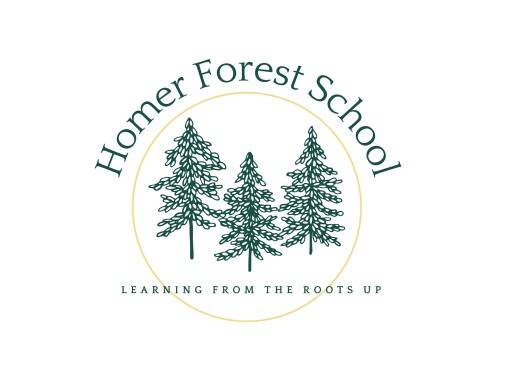A Homer-based group championing nature-centered learning is working to establish what would be the Kenai Peninsula Borough School District’s fifth charter school.
Homer Forest School would offer KPBSD students a learning model that is focused on immersion in the outdoors and emphasizes nature as a classroom.
Official talks with the school district about Homer Forest School kicked off in February, according to Angela Head. She is a member of the school’s Academic Policy Committee, the name for the group that oversees charter schools. The committee is tasked with hiring and firing the charter school’s administrator, who is in charge of making sure the school adheres to local and state policy.
Homer Forest School representatives have met multiple times this year with the KPBSD Charter School Oversight Committee to work through the school’s application. The back-and-forth precedes final approval by the KPBSD Board of Education and, after that, by the Alaska State Board of Education & Early Development.
If approved, Homer Forest School would be the first forest school on the Kenai Peninsula — Head said there’s a forest school in Fairbanks and a school with a similar forest school philosophy in Anchorage. Many of the people behind Homer Forest School, she said, already have some familiarity with the concept.
Chairing the school’s charter council is Hanna Young, the owner and lead teacher at Tiny Trees Early Childhood Lifeways Program in Homer, which Head described as a forest preschool program. Head said that program sparked interest in similar opportunities for older kids. Indeed, many of the more than 100 prospective students listed on the charter’s interest list would come from the Tiny Trees program.
“We all felt, just seeing firsthand, what the benefit is of having our children outside and that nature can be a classroom,” Head said.
The organizers behind Homer Forest School envision a school “where an outdoor environment is a classroom for all students” and has a mission of creating a learning environment that happens away from screens, according to the draft charter.
“(Homer Forest School) is an environment in which the majority of learning happens away from screens and in the outdoors and engages students in meaningful experiences, rigorous academics, and authentic projects grounded in their community,” the group’s mission statement says.
Charter schools differ from other public schools in that charter curricula are allowed to vary from the curriculum adopted by the school district, according to KPBSD. The Homer Forest School learning block model describes three blocks that students would move through each day: advisory, flexible learning and outdoors while learning.
The advisory block, which would take up about 10% of the learning day, would take place both indoors and outdoors, would focus on social and emotional learning, and offer academic support.
The flexible learning block would take place indoors and focus on foundational reading and math skills, as well as performance tasks for the outdoors while learning block. The flexible learning block would account for about 40% of the learning day.
The final outdoors while learning block would take place outdoors and would account for about 50% of the learning day. Included in that block would be project-based learning modules and learning labs.
When it comes to finding a space that will accommodate the school’s indoor/outdoor hybrid model, Homer Forest School has its eyes on the Wynn Nature Center, on Skyline Drive. A diagram presented by Homer Forest School representatives to the KPBSD Charter Oversight Committee shows more than one “home base” as well as flexible learning spaces, a yurt and connecting trails.
The most recent draft of the school’s charter includes a letter of support from the Center for Alaskan Coastal Studies, which operates the Wynn Nature Center. Center for Alaskan Coastal Studies Executive Director Elizabeth Trowbridge wrote in the letter that the Homer Forest School charter council approached her about potentially leasing the nature center or other facilities for school use.
The Wynn Nature Center, Trowbridge wrote, sits on about 80 acres of land. The Center for Alaskan Coastal Studies envisions a campuslike environment on the rest of the acreage to promote outdoor education programs and support community trail use.
“We have plans to build more buildings in the coming years and are very interested in supporting the Homer Forest School,” Trowbridge wrote. “Please consider this an official letter of interest.”
Head said the group behind Homer Forest School hopes to have their charter application before the Alaska State Board of Education & Early Development between December and March. As their application continues to be vetted at the KPBSD level, Head said the group hopes to continue strengthening community partnerships.
Head encouraged those skeptical about the forest model proposal to reach out and learn more.
“We’ve got lots of background information and citations and things about the actual science and well-cited research about how kids learn outside,” Head said. “It is hippy-dippy and feel-good and crunchy, but there’s a pretty solid background to it. It’s been a long, very thoughtfully researched project on all of our ends.”
KPBSD’s Charter School Oversight Committee is scheduled to convene Thursday for another update from Homer Forest School. More information about Homer Forest School can be found at homerforestschool.org.
Reach reporter Ashlyn O’Hara at ashlyn.ohara@peninsulaclarion.com.


